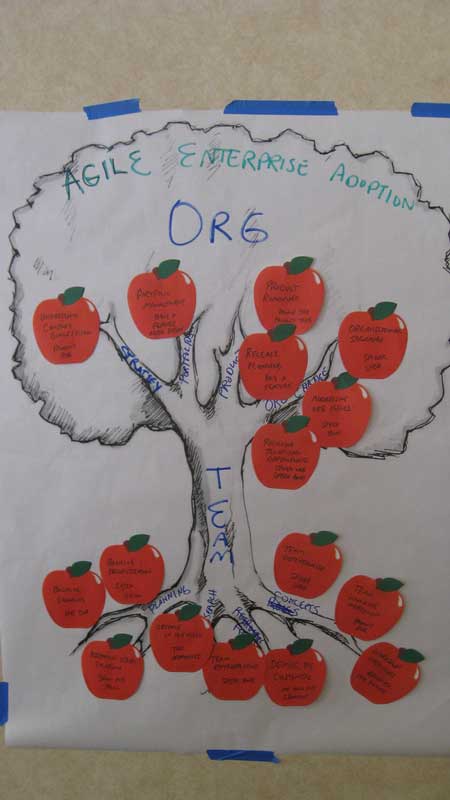Prune the Product Tree to Build a Strong Product Backlog
The Game
Start by drawing a large tree on a whiteboard or butcher paper or printing a graphic image of tree as a large format poster. Thick limbs represent major areas of functionality within your system. The edge of the tree—its outermost branches—represent the features available in the current release. Write potential new features on several index cards, ideally shaped as leaves. Ask your customers to place desired features around the tree, defining the next phase of its growth. Do they structure a tree that is growing in a balanced manner? Does one branch, perhaps a core feature of the product, get the bulk of the growth? Does an underutilized aspect of the tree become stronger? We know that the roots of a tree (your support and customer care infrastructure) need to extend at least as far as your canopy. Do yours?

Product Tree –Hohmann
Why it Works
You and your customers both know that features vary in importance. So, we tend to want to put our efforts behind the most important features—those features that provide the greatest value to customers. Unfortunately, sometimes this means that we put too little effort behind the features that are needed to complete the product. The Prune the Product Tree game provides your customers with a way to provide input into the decision making process by looking at the set of features that comprise the product in a holistic manner.
Innovation Games
Innovation Games are tools to help you develop primary market research. With these tools, customers play “games” with the objective of generating feedback and input about a product or service. Luke Hohmann created and describes more than 12 of these games in his book, Innovation Games, which is a great addition to any library. This is one of my favorite two games to play with customers, the other being Buy a Feature. This text is an excerpt from Luke’s book, used with permission.